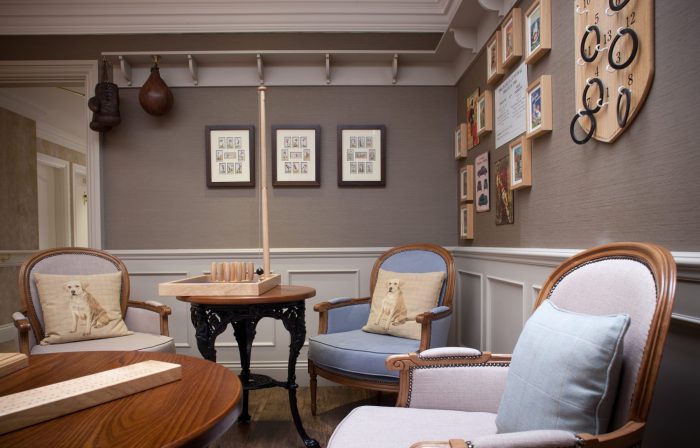How to decorate a dementia patient’s room – When it comes to decorating a dementia patient’s room, there are a few key considerations to keep in mind in order to create a calming and comfortable environment that promotes well-being. In this article, we will explore some tips and ideas for decorating a dementia patient’s room in a way that is both functional and aesthetically pleasing.
1. Use familiar and comforting items
One of the most important things to consider when decorating a dementia patient’s room is to use familiar and comforting items that can help trigger positive memories and feelings. This can include family photos, favorite colors, and familiar objects that the patient has a strong connection to.
2. Create a calming environment: How To Decorate A Dementia Patient’s Room
It’s important to create a calming and soothing environment in the room to help reduce anxiety and promote relaxation. This can be achieved through soft lighting, soothing colors, and comfortable furniture that is easy to navigate around.
3. Avoid clutter

Clutter can be overwhelming for dementia patients, so it’s important to keep the room organized and free of unnecessary items. This can help reduce confusion and make it easier for the patient to navigate their surroundings.
4. Provide sensory stimulation
Creating a sensory-rich environment can help stimulate the patient’s senses and improve their overall well-being. This can include tactile objects, soothing music, and pleasant scents that can help engage the patient’s senses.
5. Ensure safety
It’s important to prioritize safety when decorating a dementia patient’s room. This can include removing trip hazards, securing furniture to the walls, and ensuring that the room is well-lit and easy to navigate.
What do you mean by decorating a dementia patient’s room?
Decorating a dementia patient’s room involves creating a safe, comfortable, and stimulating environment that is tailored to the specific needs of the individual with dementia. This can include using familiar items, creating a calming atmosphere, and providing sensory stimulation to help improve the patient’s quality of life.
Are you wondering how to decorate a round living room? Check out this helpful guide on how to decorate a round living room for some creative ideas and inspiration. From furniture arrangement to color schemes, this resource has everything you need to make your round living room stylish and functional.
What is known about decorating a dementia patient’s room?
Research has shown that the physical environment can have a significant impact on the well-being and quality of life of dementia patients. By creating a supportive and engaging environment, caregivers can help reduce anxiety, improve mood, and enhance overall quality of life for individuals with dementia.
Solution for decorating a dementia patient’s room
By following the tips and ideas Artikeld in this article, caregivers can create a personalized and comforting environment for dementia patients that promotes well-being and enhances quality of life. By using familiar items, creating a calming atmosphere, and prioritizing safety, caregivers can help create a space that is both functional and aesthetically pleasing for individuals with dementia.
Detail Information on decorating a dementia patient’s room
Decorating a dementia patient’s room requires careful consideration of the individual’s needs and preferences. By incorporating familiar items, creating a calming environment, and providing sensory stimulation, caregivers can help create a space that is tailored to the specific needs of the patient. Additionally, prioritizing safety and organization can help reduce confusion and improve overall well-being for individuals with dementia.
Describe in depth how to decorate a dementia patient’s room
When decorating a dementia patient’s room, it’s important to consider the individual’s preferences, interests, and needs. By using familiar items, creating a calming environment, and providing sensory stimulation, caregivers can help create a space that is both personalized and supportive. Additionally, ensuring safety and organization can help reduce anxiety and improve overall well-being for individuals with dementia.
Trying to figure out how to decorate a round living room can be a challenging task. From choosing the right furniture placement to selecting the perfect color scheme, there are many factors to consider. If you’re looking for some inspiration and tips on how to make the most of your unique space, check out this helpful guide on how to decorate a round living room.
Conclusion
In conclusion, decorating a dementia patient’s room requires careful consideration of the individual’s needs and preferences. By using familiar items, creating a calming environment, and providing sensory stimulation, caregivers can help create a space that promotes well-being and enhances quality of life for individuals with dementia.
FAQs
1. How can familiar items help dementia patients?
Familiar items can help trigger positive memories and feelings for dementia patients, creating a sense of comfort and security.
2. Why is it important to create a calming environment?
Creating a calming environment can help reduce anxiety and promote relaxation for dementia patients.
3. How can sensory stimulation benefit dementia patients?
Sensory stimulation can help engage the senses and improve overall well-being for individuals with dementia.
4. What are some common safety considerations when decorating a dementia patient’s room?, How to decorate a dementia patient’s room
Common safety considerations include removing trip hazards, securing furniture, and ensuring adequate lighting.
5. How can caregivers personalize a dementia patient’s room?

Caregivers can personalize a dementia patient’s room by incorporating familiar items, colors, and objects that the patient has a strong connection to.



